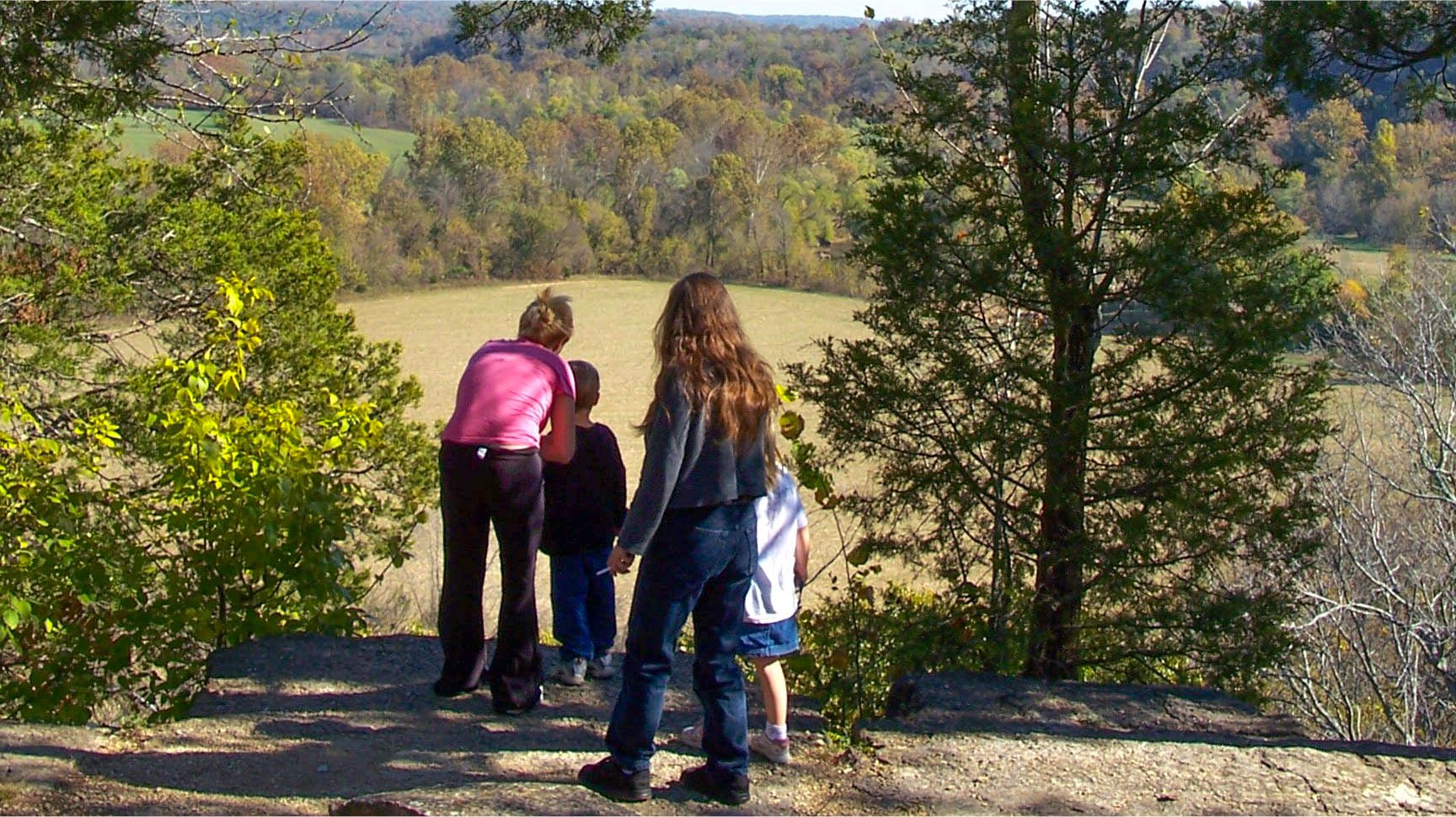Visitors Guide to DeSoto
Jefferson County, Missouri
Nearby Washington State Park
Humans have been living in the DeSoto area for at least a thousand years. At Washington State Park, nine miles to the southeast, two-thirds of Missouri’s known petroglyphs, or rock carvings, can be found. These carvings are remnants of Native American ceremonies of a culture that archaeologists call the Mississippian. The first European settler in the area was Isaac Van Metre who built a small cabin on his French land grant in 1803 along Joachim Creek.
The history of the town didn't begin until the St. Louis, Iron Mountain and Southern Railway announced plans in 1851 to build a railroad from St. Louis to Iron County. DeSoto was platted in 1857 by Thomas C. Fletcher (who later became Governor of Missouri) and his brother-in-law, Louis Rankin, on land through which the railroad would run. Fletcher and Rankin named the town in honor of the explorer Hernando DeSoto, who in 1541 had claimed for Spain the area that would become the Louisiana Territory. Fletcher and Rankin built a station house for the railroad and soon the town had a post office, general store, gristmill, blacksmith shop, hotel, public hall, and a private school.
DeSoto's livelihood would become further entwined with the railroad when it agreed to donate land to the railroad and exempt it from taxes on any improvements if the railroad would build and maintain on the land the principal machine shops of their Northern Division. A "car works" department built and repaired passenger and freight cars and the machine shop repaired cars and engines. In addition to the approximately 400 men employed in these works there were about 150 road engineers and firemen who made DeSoto their home. In 1917 the railroad became part of the Missouri Pacific Railroad and later part of the Union Pacific Railroad.
DeSoto's fortunes began to decline in the early 20th century. Many of DeSoto's citizen's lost their lives in World War I and 57 people died in the Spanish influenza epidemic. The rise in popularity of automobiles decreased the use of railways and threatened the livelihood of many of Desoto's residents. In 1922, railroad workers went on a strike that lasted almost two years and resulted in a continuing reduction of the work force.
In 1980, DeSoto was recognized as the center of population of the United States. More recently Main Street was widened and beautified. A tree museum, hiking-biking trail, and gazebo have been added to Walther Park. DeSoto’s residents have the privilege of living in the quiet environment of a small town. Main Street, with its tradition and new beauty, runs parallel with the railroad, which facilitated the establishment of the town.











